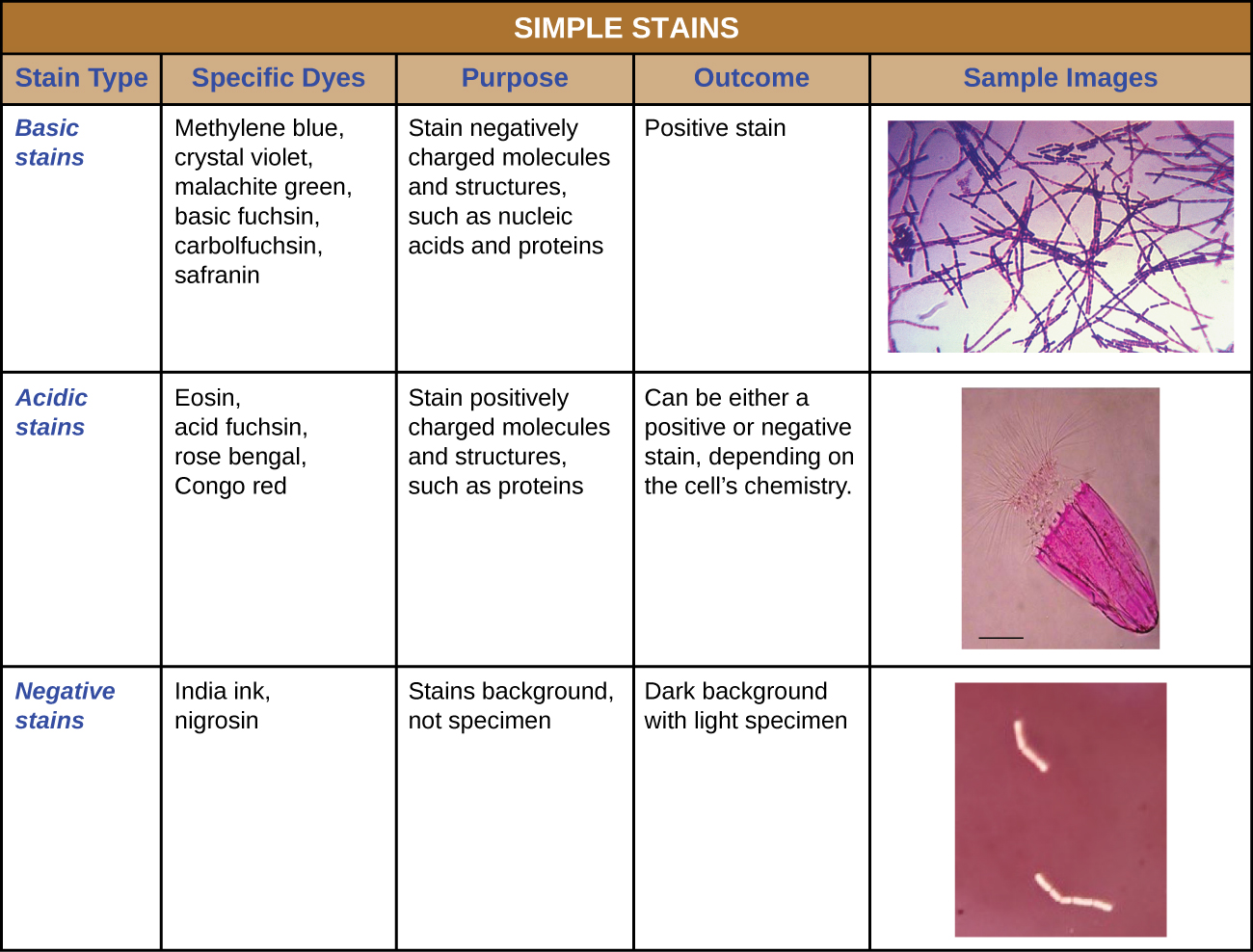A Negative Stain Is a Process Using Which Dye
The dye used in this stain is not absorbed by the subject and instead darkens the fluid surrounding it. C If cells are acid-fast they are gram-negative.

2 3 Staining Microscopic Specimens Microbiology 201
Place a slide against the drop of suspended organisms at a 45 angle and allow the drop to spread along the edge of the applied slide.

. Negative staining is used when it is important to be able to view the bacteria without using harsh stains or performing the heat fixing technique that could possibly distort or change the shape of the bacteria. If the chromophore is the positively charged ion the stain is classified as a basic dye. Negative staining or Indirect staining refers to a staining technique that helps us visualize various microorganisms through light and electron microscopy.
In Negative staining technique an acidic stain such as Nigrosin India ink Eosin or Congo red is used in which the bacterial culture or the specimen is mixed well and then spread over the Microscopic glass slide to form a thin smear. It is used when looking at capsules and yeast or spirochetes that do not stain well. A negative stain refers to the process which uses nigrosin or eosin.
Negative stains are the opposite of basic stains and are used in dark-field microscopy. The negative staining technique uses a. A Gram Stain Test Is Used to Categorize Bacteria.
One common negative staining. This implies that the stain rapidly releases a hydrogen ion proton and the. India Ink or Nigrosin is an acidic stain.
Knowing if the unknown kind of bacteria is gram-good or bad might help find out the bacteria. Negative staining requires an acidic dye such as India Ink or Nigrosin. It is of simple staining differential staining and special staining.
The Negative Staining Principle Negative staining necessitates the use of an acidic dye such as India ink or Nigrosin. Simple Staining is used for the demonstration of shapes and arrangements. Here an acidic dye like nigrosin or Indian ink is used.
D Acid-fast cells appear red in a completed acid-fast stain. Negative stain is used when viewing bacteria by wet mount or hanging drop slide to view. This means that the stain readily gives up a hydrogen ion and becomes negatively charged.
In bright field microscopy the method of indirect staining employs liquid medium black coloured dyes like Nigrosin and India ink that stains the background leaving the bacteria unstained. Acidic stain carries a negative charge and repelled by the bacteria which also carry a negative charge on their surface. Differential Staining helps to differentiate the organism on the basis of staining whether positive or negative cocci or.
How is it different from the other stains performed what did you see under the microscope. It can also be used to stain cells that are too delicate to be heat-fixed. Dyes are selected for staining based on the chemical properties of the dye and the specimen being observed which determine how the dye will interact with the specimen.
A negative stain is a process using as nigrisin or eosin. We review their content and use your feedback to keep the quality high. Nigrosin is an acidic stain.
Using aseptic technique place a loopful of inoculum from the bacterial culture in the drop of nigrosin and mix. The specimen does not need to be heat-fixed prior to negative staining. Nigrosin or eosin is a acidic stain.
We use nigrosin as our negative stain. The object or organism stands out as clear or bright against the dark background. Indirect staining Negative staining In this staining process instead of ells background is stained.
Experts are tested by Chegg as specialists in their subject area. Capsules do not absorb most basic dyes. Hence an acidic dye do not stain bacteria.
Since the surface of most bacterial cells is negatively charged the cell surface repels the stain. Eosin or Nigrosin is an acidic stain which means that the stain readily gives up a hydrogen ion proton and the chromophore of the dye becomes negatively charged. This means that the stain readily gives up a hydrogen ion proton and the chromophore of the dye becomes negatively charged.
E Non-acid-fast microbes appear blue in a completed acid-fast stain. Nigrosin or India Ink is an acidic stain. Principle of Negative Staining.
If you skip this step gram negative bacteria retain the purple dye. In the other strain process organisms are seen in colour such as purple violet etc but in the negative staining colorless microbial cells are seen aga View the full answer. Procedure of Negative Staining.
The negative stain is particularly useful for determining cell size and arrangement. Staining is the process of adding a dye to the smear. The dye stains the background but does not penetrate the capsules which appear like halos around the borders of the cell.
A It is used to identify members of the genus Mycobacterium. A negative stain is a process using which dye. Who are the experts.
Place a small drop of nigrosin close to one end of a clean slide. Therefore a negative staining technique staining around the cells is typically used for capsule staining. B Acid-fast cells retain the primary dye after treatment with acid-alcohol.
A gram stain is a common test using a microscope to help identify types of bacteria and can be positive or negative. In the other stain processes the organisms tend to be seen in color for example violet purple etc but during negative staining. If the negative ion is the chromophore the stain is considered an acidic dye.

Negative Staining Principle Procedure And Result Interpretation

No comments for "A Negative Stain Is a Process Using Which Dye"
Post a Comment